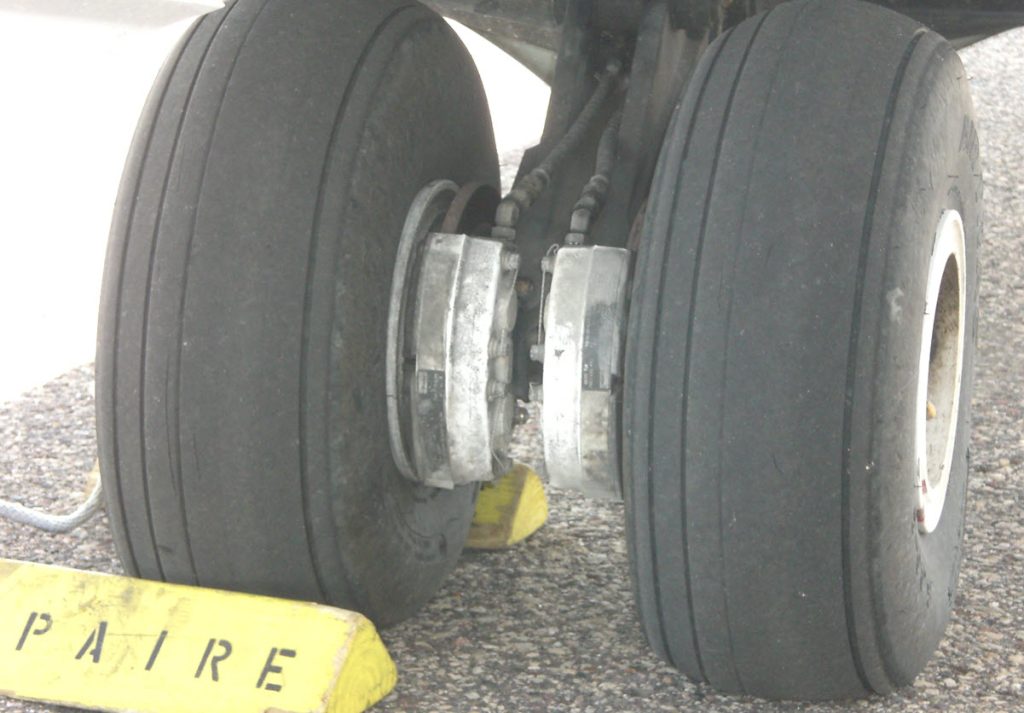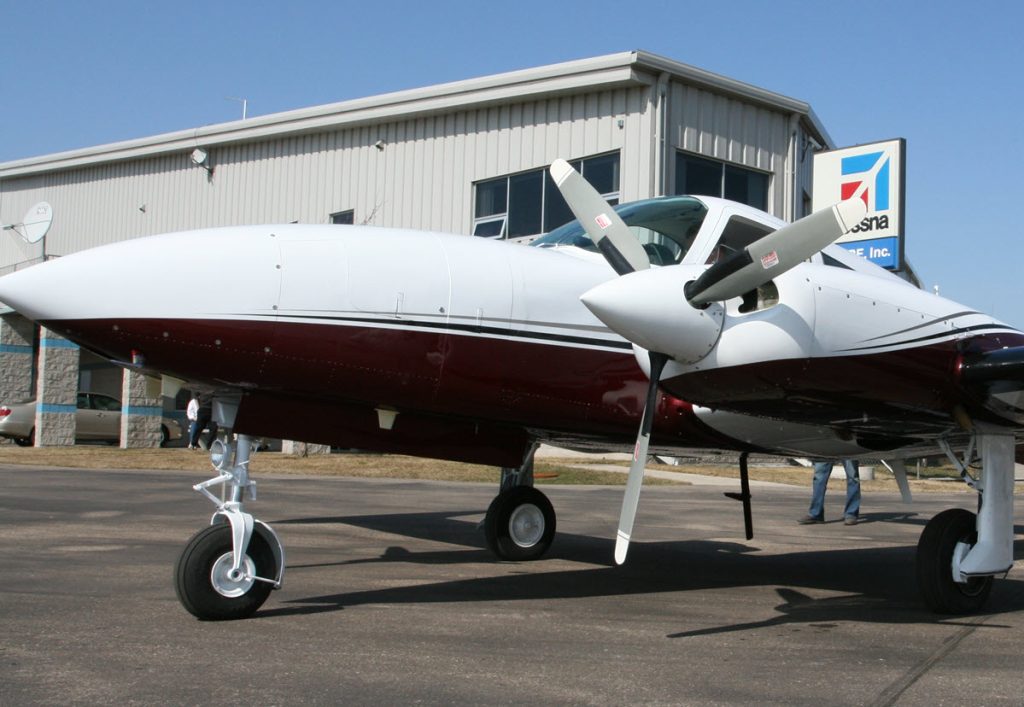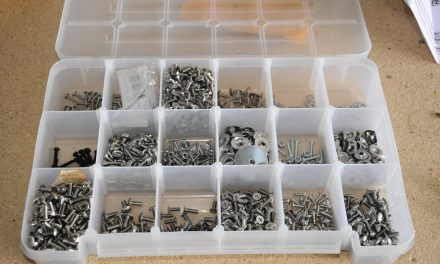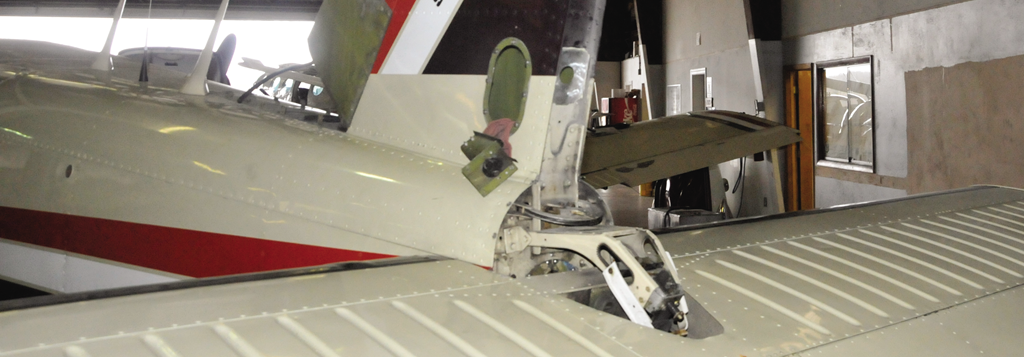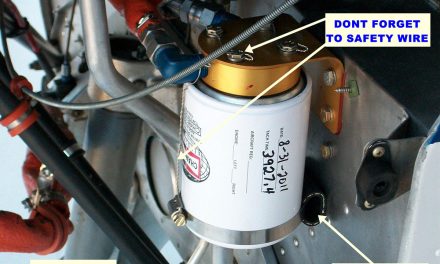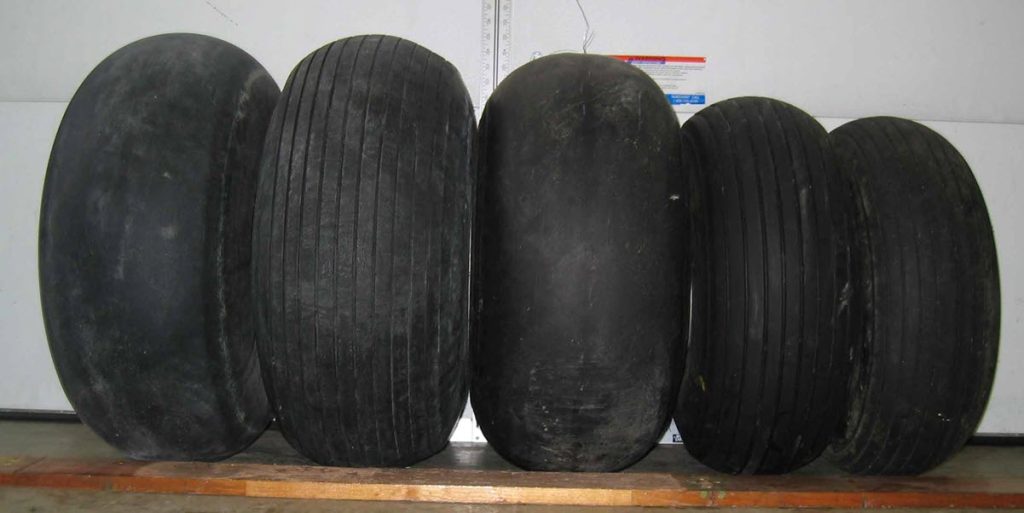
The amount of time that an airplane spends on its tires during a flight is minimal, but it’s vitally important that those tires are in more than just “passable” condition.
No doubt about it, blowing a tire on landing is more than a little exciting. Obviously, no pilot wants that kind of excitement, and as a result, the pilot needs to make sure that the tires “pass inspection.”
It’s expected that most pilots do a regular visual inspection of their tires, and that’s how they determine when new tires are needed. It is important to make sure the tires are wearing evenly. Check to make sure the mains aren’t getting out of alignment, similar to what happens with a car.
There are a number of other issues that readily come to mind when it comes to tire wear. One of the more prevalent is flat spots, which create a “thumpity thump” when taxiing. These flat spots are caused by braking, and they are most problematic when a craft is used for training purposes, as students have a propensity to hit the brakes hard. Normal wear and tear is another issue, so during your inspection, you should be checking on tread depth.
Things to keep in mind when inspecting your tires:
- Examine the surface area
- Pay attention to the sidewall and make sure no cracking is taking place
- Check your sidewalls for bulges
- Be attuned to the possibility of chemical damage to your tires, and also heat damage that can be created during braking.
Which Tires Should I Buy
Ask yourself the following questions:
- What is the mission of the craft? This includes what kind of surface the craft will be landing on. In the case of the Super Cubs, they land virtually anywhere and, as a result, need a much different tire than one that is landing on paved runways.
- Will the plane be used in a training environment? If so, consider buying a very durable tire, because students can be more than a little rough on tires.
- How much do you want to spend?
- What are other pilots saying about the tires they use and the kind of luck they are having with them? Experience is probably as good of an indicator as there is when making the decision of what rubber to put on your airplane.
- What are the airframe manufacturer’s specifications regarding the tires that should be used on their craft? These specifications include, but are not limited to, size and ply rating. Among various tire manufacturers, there can be considerable sidewall strength and weight differences for the same size and ply rated tire. Remember, you get what you pay for. As can be expected, cheap tires don’t seem to last as long as their more-expensive counterparts.
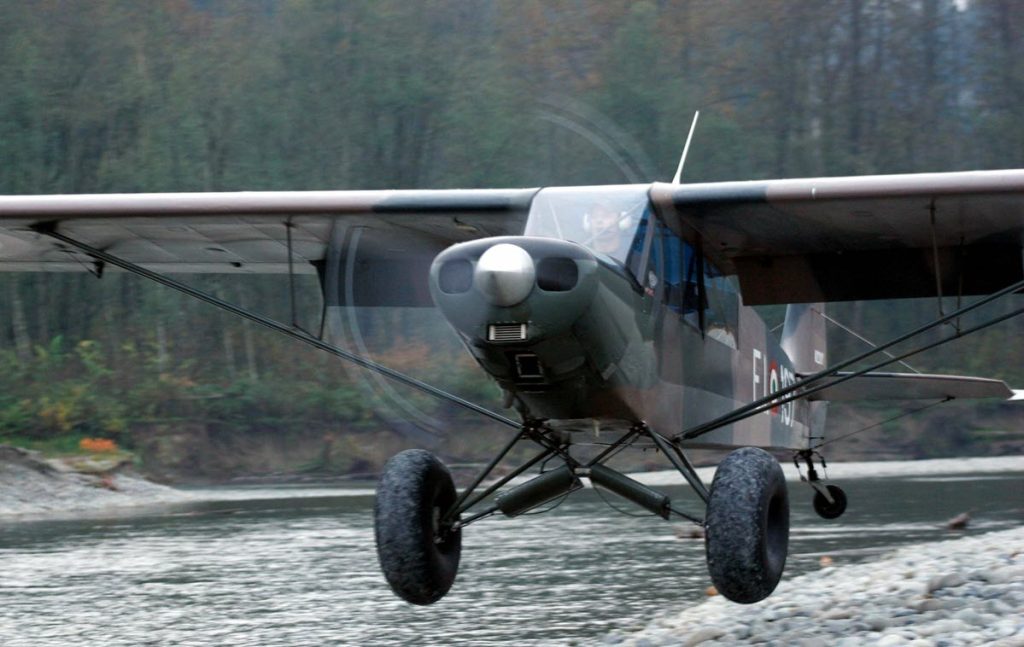
Courtesy SuperCub.Org
Some Super Cub’s use Bushwheels, which are somewhat of a specialty tire.
One Super Cub owner uses 35 inch diameter bushwheels, that were chosen for their special construction. They are handcrafted onto airbags and have a sidewall valve stem. The air pressure in these tires can be lowered for rough-ground usage, and pilots do not have to worry about tire slippage and stem shearing.
Our experts agreed that there are several things that would convince them to not purchase a particular tire. So do your research and examine the tire’s track record by looking at your experience and the experience of others.
Retreads?
If you are contemplating the use of retreads, there are several things you may want to consider. FAA certification of an aircraft tire retread operation guarantees only the highest quality for the aircraft industry. More than 95 percent of today’s commercial airline operations use retreaded aircraft tires. For many aircraft, tires represent the third largest item in the operating budget, and retreads can help greatly reduce this expenditure.
Whether retreads are in the future for you and your craft or not, replacing your tires certainly is. As a result, be sure to inspect them frequently and keep yourself safe to make sure that you avoid the “excitement” of a blowout.

Courtesy SuperCub.Org

